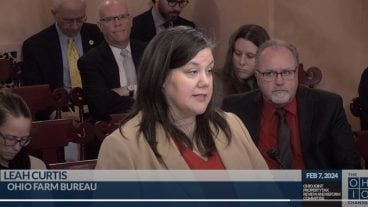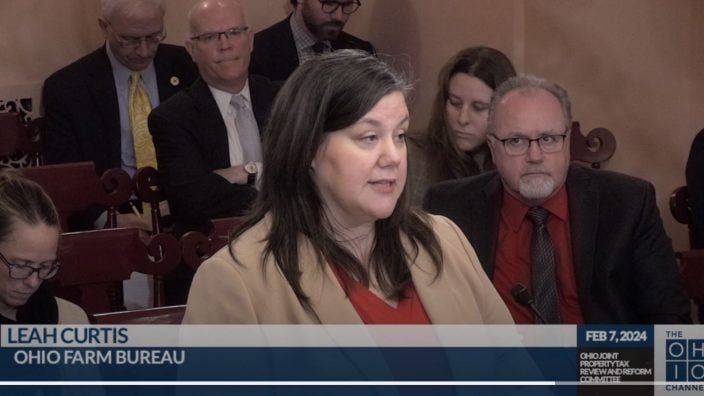Farm Bureau welcomes summer ethanol blend waiver
The emergency fuel waiver to allow the sale of summer gasoline blends containing 15% ethanol will lengthen the period during which Americans can continue buying E15 from June 1 to Sept. 15.
Read MoreProjected $150.5 billion in net cash income is down about 21% relative to last year, which was a record-high income year.
USDA is projecting farm sector profits this year to drop from last year’s record. The latest forecast has producers generating just over $150.5 billion in net cash income. That is down about 21% relative to last year, which was a record-high income year.
Corn, soybeans, fruits and vegetables are all forecast to go down, according to Spiro Stefanou, administrator of USDA’s Economic Research Service.
“Crop cash receipts are going to go down nearly $9 billion,” Stefanou said. “We’re looking at soybeans going down the most by about 10.6%, followed by corn looking at a drop of 7.1%, nearly 5% for fruits, about a 3% drop for vegetables, and melons are going to hit about an 11% drop.”
Only wheat will see an increase in receipts, but by less than 1%. Livestock receipts are expected to drop by 5.7%, led by a decline in dairy sales.
Meanwhile, production expenses are expected to go up 11% this year.
“Interest expenses are going up 22.4%,” Stefanou said. “Livestock and poultry purchases are expected to go up nearly 14%. And that’s actually the biggest dollar increase. Labor costs are going up as well.”
USDA projects possible small declines for fertilizer, fuel and feed costs.
However, USDA Chief Economist Seth Meyer said this new forecast is not a farm income disaster at all.
“Yes, it is declining relative to last year. Yes, receipts are falling. Yes, government payments are falling. Yes, input prices continue to rise,” Meyer said. “But it’s still better than the long run average farm income year.”
Meyer said this is not a case of asking if the cup is half full or half empty, but that it is three quarters full, noting things are still quite good for farm income across the country.
“Producer margins may be squeezed, so we’re tightening the belt here a little bit,” Meyer said. “We’ve still got plenty of room.”
Meyer said the farm sector will make it through the year in pretty good shape.


The emergency fuel waiver to allow the sale of summer gasoline blends containing 15% ethanol will lengthen the period during which Americans can continue buying E15 from June 1 to Sept. 15.
Read More

Ohio Farm Bureau 2024 priority issues focus on business climate, regulatory environment, preserving Ohio’s farming heritage, healthy rural communities, and grassroots advocacy.
Read More

The law requires most businesses to report information about their beneficial owners, and the intent is to try to make it harder to illegally hide assets and commit financial crimes.
Read More

This allows for limited sale and distribution of dicamba OTT products that were already in the possession of growers or in the channels of trade and outside the control of pesticide companies as of Feb. 6, 2024.
Read More

Data shows there are fewer farms in the United States, yet more new, beginning and young farmers.
Read More

How will this impact Ohio farmers and what can be done to allow for use of the products that have already been purchased?
Read More

American Farm Bureau President Zippy Duvall stressed that it is imperative EPA expeditiously provide clarity to farmers and asked the agency to issue an existing stock order.
Read More

farmers are happy with the purpose and philosophy of the CAUV program, but all would prefer some more predictability in their values and more importantly, their tax bill.
Read More

Monthly webinars run January-June focusing on grain marketing, renewable energy, the agricultural labor supply and more.
Read More

For Ohio shoppers, the Thanksgiving dinner receipt will be slightly lower than the national average for the same market basket items at $59.24.
Read More